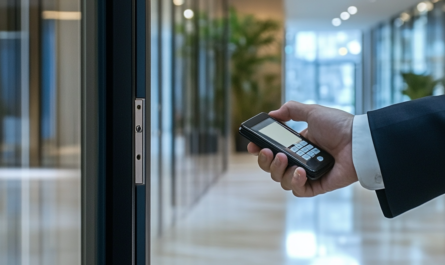Modern technologies make life more convenient, safer and more comfortable. Today digital systems for home They not only allow you to automate household processes, but also provide a high level of protection. Thanks to development intelligent technologies, motion sensors, video surveillance systems and remote control, owners of houses and apartments can control their homes from anywhere in the world.
Smart home: how technology improves security
One of the main functions of digital technologies for the home is security. Modern systems allow control access to the premises, detect suspicious activity and instantly respond to emergency situations.
Main components of the security system:
- Smart locks and access control systems — allow you to control the front door via a smartphone, assign temporary codes for guests and block access in the event of suspicious activity.
- Video surveillance — cameras with facial recognition and night vision allow you to monitor your home in real time.
- Motion and door/window opening sensors — notify the owner of suspicious activities and can automatically turn on the lighting.
- Smoke, gas and water leakage sensors — help prevent emergency situations and minimize possible consequences.
- Automated alarm systems — integration with security services and emergency notifications allow you to quickly respond to dangerous situations.
Usage integrated approach to security makes it possible not only to control the premises, but also to prevent potential threats. Such systems increase the level of comfort, as they allow you not to worry about forgotten keys or leaving the gas on – all this can be monitored and controlled remotely.
Automation and convenience: one-touch home control
In addition to protection, digital technologies provide convenience and automation of many household processes. They allow you to make a home more comfortable and energy efficient, adapting it to the needs of the owners.
What can be automated with digital systems?
- Lighting
- Turning lights on and off according to a schedule or motion sensor.
- Control brightness and color temperature.
- Lighting scenarios for different situations (work, leisure, evening atmosphere).
- Climate control
- Regulating the temperature in the house taking into account the time of day and the presence of people.
- Heating and air conditioning settings via the app.
- Automatic shutdown of heating or air conditioning when windows are open.
- Household appliances
- Control of coffee makers, washing machines, ovens and other equipment.
- Turn devices on and off according to a schedule or remotely via smartphone.
- Voice assistants
- Control your smart home system using voice commands.
- Synchronization with other digital devices.
Modern technologies allow customize your home space to suit your individual preferences. Thanks to this you can save time, energy and make life more convenient.
Data protection and cybersecurity: how to secure your smart home
Although digital technologies provide many advantages, it is important to remember protecting personal data and preventing hacking. Since smart home systems work via the Internet, attackers may try to gain access to them.
The main threats to digital systems:
- Wi-Fi network hacking and data leakage.
- Intercepting control of cameras and sensors.
- Using weak passwords to gain access to the system.
To minimize risks, it is important to take precautions:
- Use strong passwords and two-factor authentication.
- Regular update software to eliminate vulnerabilities.
- Choose reliable devices with data protection from trusted manufacturers.
- Restrict access to the system only for trusted users.
Home security is not only protection from physical threats, but also reliable protection of digital systems from hacking.
Energy saving and resource optimization: how technology helps you save
Digital systems are not only make life more comfortable, but also help reduce utility costs. Thanks to intelligent resource management, you can significantly reduce electricity, water and heating costs.
How does technology help you save money?
- Smart meters — control energy consumption and help optimize consumption.
- Smart plugs and motion sensors – turn off electrical appliances if they are not in use.
- Automated heating – allows you to reduce the temperature at night or in the absence of residents.
Optimizing resource consumption not only reduces utility costs, but also reduces the harmful impact on the environment.
Popular mistakes when installing digital systems and how to avoid them
Many users encounter problems when installing and configuring smart home systems. Main mistakes: incorrect choice of equipment, weak network protection and system overload with unnecessary functions.
To avoid problems:
- Choose equipment according to your actual needs.
- Keep up with cybersecurity, protecting access to the system.
- Set up automation scripts wiselyto avoid unnecessary costs.
Modern digital systems for home make life more comfortable, safer and energy efficient. Smart home systems help control lighting, temperature, household appliances, monitor security and optimize resource consumption.
One of the key advantages of such solutions is their availability and ease of integration. Just a few years ago, smart home systems seemed like a luxury available only to elite mansions. Today, digital technologies have become accessible to everyone, allowing you to customize lighting, temperature, protection against burglary and leaks, as well as automate household appliances.
However, despite the convenience it is important to comply with cybersecurity measures and configure the system correctlyto avoid vulnerabilities.
Investing in digital technology is not only a matter of convenience, but also a way to increase safety and reduce costs. If you select and configure the system correctly, it will will greatly simplify everyday life.
Yes, most digital solutions can be installed without complex construction work using wireless technology.
By using strong passwords, encryption, and regular software updates, the risk of hacking is greatly reduced


